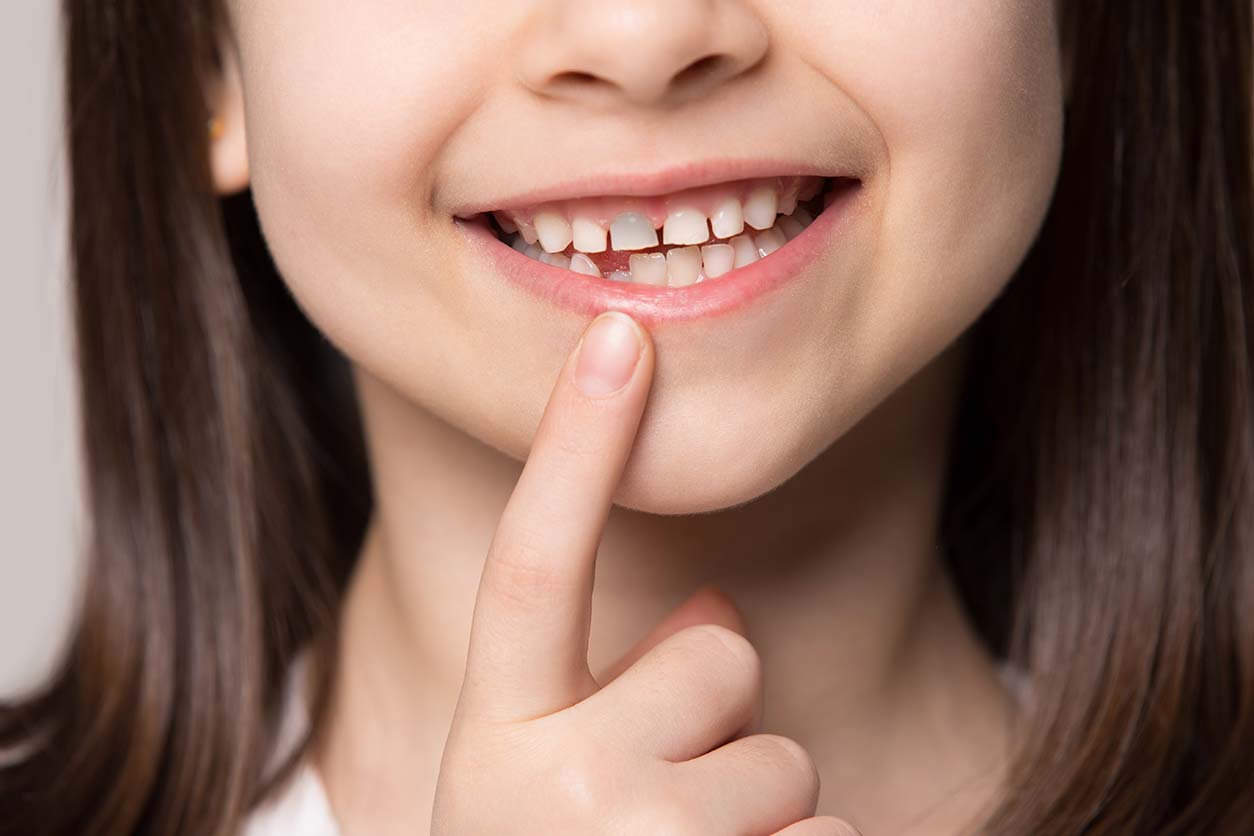We like our teeth to be white; that’s a fact. Yellow, black, grey: this rainbow of troubling colors rarely means good news. For example, grey discoloration tends to appear chiefly after a trauma. While adults can be victims of falls and other dental trauma, such as devitalization, resulting in grey teeth, children are more likely to exhibit this color, which can be a great cause for concern.
You may be relieved to know that grey stains on the teeth aren’t always serious or irreversible. However, if they are accompanied by pain, it’s important to keep an eye on the situation. If a tooth turns grey after a trauma, what exactly are the consequences and what actions should you take? The answers to these questions can help you arrive at a better understanding of the problem so you can react accordingly.
If there are simple treatments or remedies to correct the problem, your first recourse should be to schedule an appointment with your dentist, who can reassure you.
Grey teeth, a sign of dental trauma
When your child is learning to walk, it’s only natural that falls will be part of the process. During this same period, he or she will be testing the resistance of those eight little teeth that have just come in. The first baby teeth—the incisors—are prime targets during these sometimes successful, sometimes unsuccessful trials. Fortunately, because of babies’ small size and weight, the impacts are often inconsequential. More fear than harm? Not necessarily. After a fall, whether the tooth is intact or cracked, be on the lookout for any possible changes in color. The tooth may have been knocked into the bone. This can lead to an abscess or damage to the germ (the aggregation of cells that eventually form a tooth) of the permanent tooth. Well before any discoloration occurs, if there’s bleeding around the tooth, apparent damage or significant looseness, these are all valid reasons to consult your dentist.
If you haven’t observed any of these signs, but the tooth turns grey, it means that there’s a hemorrhage in progress. Following a trauma, the tiny blood vessels around the tooth can burst, releasing blood that ends up inside the crown of the tooth, resulting in the appearance of a grey hue within the next few days. At this point, the tooth is probably still alive and sensitive. To prevent the situation from worsening, it’s important to make an appointment with your dentist promptly.
If you aren’t able to visit your dentist within a reasonable amount of time, continue observing the problem tooth, focusing particularly on the surrounding gums. If a white spot appears, this means that the nerve is dead and is expelling itself in the form of pus. In this case, it’s crucial to consult a dental professional as soon as possible. On the other hand, if no white spot appears, it means that the tooth is still alive, and no further action is necessary. The grey baby tooth will remain in place until the permanent tooth comes in.
The same principles apply to permanent teeth. Keeping an eye on your teeth following a trauma is the best way to detect any abnormality and prevent any significant damage.
Is it possible to remedy grey teeth?
As we’ve mentioned, in the case of children, waiting for the permanent tooth to come in is the easiest way to resolve the problem. You should also be aware that, in most cases of dental trauma, professionals tend to do all they can to preserve the affected tooth. As a result, speech, nutrition and jawbone development are not impaired. The recommended solution? A dental professional can apply resin to correct the condition of the tooth. Afterwards, regular x-rays can confirm that no abscess has formed at the root and that the permanent tooth is developing normally.
Okay, but what about adults?
As long as the tooth isn’t dead, there are several natural remedies and medical solutions available.
The most well-known treatment is, without a doubt, dental veneers and crowns or caps. Made of porcelain or a composite, these prosthodontic materials cover the damaged tooth to conceal any imperfections.
Having your teeth whitened with hydrogen peroxide at the dentist’s office is another attractive alternative.
The importance of good dental hygiene
Regardless of the treatment you choose, don’t forget that good oral hygiene is still imperative for preventing or correcting any discoloration related to smoking or the consumption of red wine, tea or certain foods.
- Brush your teeth and tongue for two to three minutes after each meal and then floss or use a water pick to dislodge any food that’s stuck between the teeth or between the teeth and gums.
- To avoid damaging the enamel, try to wait 30 minutes after a meal before brushing your teeth. However, while you’re waiting, it’s okay to rinse out your mouth.
- Complete the tooth-brushing process with an antiseptic mouthwash approximately once a week.
- Don’t forget to visit your dentist regularly for tartar removal to eliminate any stubborn plaque and detect any problems.
- Limit your consumption of food and beverages known to stain the teeth (tea, coffee, red wine, beets, etc.).
- Replace your toothbrush or the head of your electric toothbrush at least every three months.
Of course, regular visits to your dentist are the most reliable way to verify your oral health. Reassuring you, informing you and advising you: prevention and guidance are the core components of the mission of the professionals at Clinique Dentaire Charles Trottier. Thanks to their high-tech equipment, their human approach and their attentiveness, they’re sure to find the best solution for you.
Sources :
Conseil dentaire. Les traumatismes dentaires [Dental trauma]. 2011.
Dentaly. Mon enfant a des taches sur les dents, dois-je m’inquiéter? [Should I be worried if my child’s teeth have grey stains?] 2021.
La Parenthèse. Dent grise : causes et traitements [Grey teeth: causes and treatments].





